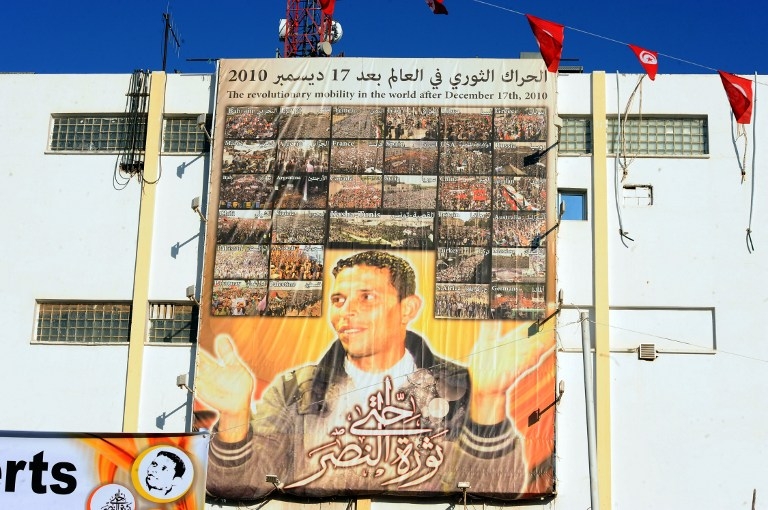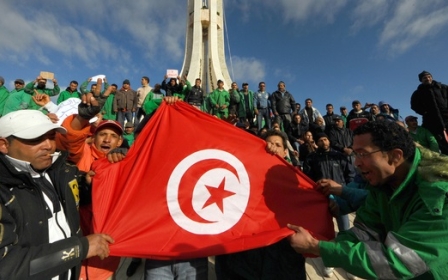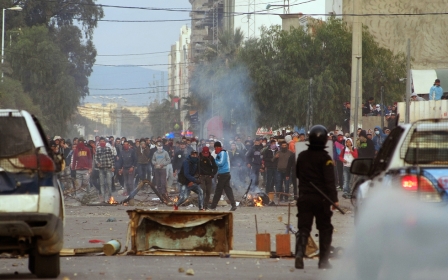Why decentralisation could be the key to saving the Arab world

The curse of the modern Arab world has been the tendency towards centralisation of power.
Whether in the hands of a single party, family, religious sect or ethnic group, monopolisation of power and suppression of pluralism have taken the place of developing stable political institutions to manage diversity and mediate differences.
Faced with the disintegration of the central state and the pursuant chaos across the region in Libya, Syria and Iraq, many are tempted to argue that a strong central state is now needed more than ever. Such complex societies as these, the argument goes, can only find stability if it is imposed with an iron fist.
But isn’t that precisely what got us here in the first place? Behind the façade of a strong state and national unity lay a mix of simmering grievances and unaddressed political, social, economic, ethnic, regional and religious divisions.
Far from managing these differences, the strong central state skillfully manipulated them, drawing them into a power game to sustain its own dominance, in a continuation of colonial policies. In the process, it loaded these identity labels with a political salience that would prove to be explosive.
The Arab Spring has not created sectarian divisions – it has simply pierced the smokescreen of national unity to reveal what is at the core of these regimes: minority rule, sustained by force and social or territorial hierarchies.
Libya’s revolution, for instance, was as much about aspirations for regional autonomy as it was about political freedoms, particularly for those in the eastern regions that suffered from poor infrastructure and neglect despite their vast oil wealth. In Benghazi, the country’s second city, a large part of the population lived in poverty, without clean running water and a single sewage treatment plant built over 40 years ago – in a country with the world’s ninth largest oil reserves.
The Libyan uprising was “a revolution of the regions and rural areas against a central authority, an authority which has been perceived for the last half-century as being abusive and arbitrary”. The beginnings of the federal state model established after independence in 1951 were swept away by Gaddafi’s coup in 1969.
Tunisia’s revolution too, is a story of deep regional inequalities. It is no coincidence that the revolution erupted from the depths of one of the most marginalised regions, Sidi Bouzid, and first spread to Kasserine. These regions had suffered decades of neglect by the central state and were treated as mere sites for extraction of raw materials – phosphates, oil, agricultural crops – at minimal wages and no added value to their inhabitants.
While Tunisia was touted as an economic miracle, with GDP per capita growth averaging 3.4% over 1990 to 2000 (making it the second fastest growing country in the MENA region), this same period saw relative poverty soar from 30.3 percent to 49.3 percent in Kasserine and from 39.8 percent in 1990 to 45.7 percent in 2000 in Sidi Bouzid over the same period.
It is this centralisation of power, and the huge inequalities it produced, that sparked the Arab Spring. Ironically, it is those bastions of Arab nationalism - Libya, Syria, and Iraq – where national unity has disintegrated most spectacularly. Once able to impose control from the centre, they are caught between the sudden breakdown of their habitual mode of managing differences – repression and co-optation – and an inability to switch to a new mode - power sharing.
In Tunisia’s case, centralisation was a double curse – not only was power centralised politically, but also geographically on the country’s coast. The last of Ben Ali’s budgets in 2011 allocated 82 percent of public expenditure to the 11 coastal regions while a paltry 18 percent went to the 13 interior regions.
While more than 83 percent of industrial firms are located on the coast, interior regions suffer from a flagrant lack of infrastructure – 99.9 percent of homes in the capital Tunis are supplied with drinking water, compared with just 62 percent in the centre-west Kasserine region and 50 percent in Sidi Bouzid. While residents of Tunis share one doctor between 468 people, this rises precipitously to 2,149 people in the Centre West region, according to the 2014 national census.
A recent report by the Lebanese Center for Policy Studies found that states in the Arab region are the most centralised of any region in the world. While most countries worldwide have opted to decentralise powers to local and regional government, the vast majority of Arab countries have resolutely maintained powers and resources at the top.
The figures speak for themselves – between 1990 and 2006, local government expenditure in OECD countries averaged around 41 percent of central government spending (20 percent of GDP) and around 23 percent in Latin America. In the Arab world, local government expenditure averages only about 5 percent of GDP.
In this respect, Tunisia is leading the way. The new constitution adopted in 2014 dedicates an entire chapter to local authorities and grants local and regional government full administrative, political and financial independence and real decision-making powers. The draft law on local authorities to be discussed in parliament in the next few months, initiating a process of renegotiating territorial powers and redefining power relations between centre and periphery.
The protests that broke out in Kasserine last month demonstrate that this renegotiation is badly needed. It is clear that the hyper-centralised deeply asymmetrical model is broken but it persists because it serves the interests of an economic, political and administrative elite that benefits from maintaining a concentration of power.
By creating new regional and local elected bodies with a popular mandate to promote the interests of their region and directly accountable to their inhabitants, a counterbalancing force can emerge to challenge the existing system of regional inequalities and the policies and power structures that sustain it.
Tunisia has already succeeded in the first phase of its transition through an ability to construct political mechanisms for power sharing and a willingness to make concessions among political actors and social groups. Decentralisation is an extension of this on a territorial level and could mark a revolution in Tunisia’s governing system and in the entire Arab region, providing a step forward in how to solve the malaise of the centralised Arab state.
Where does this leave the Arab world’s repressed majorities, its persecuted minorities and its neglected regions?
Regional tensions continue to simmer, from Tunisia and Libya, to Yemen and Iraq. Tunisia’s decentralisation process could launch a much-needed debate in the region on decentralisation and regionalism, still seen as dangerous concepts that undermine national and Arab unity through further fragmentation.
In fact, decentralisation of power is already happening across the region but in an uncontrolled, chaotic process of competition between political groups, as the effectiveness of pure coercion in suppressing differences breaks down.
Rather than delaying the inevitable, Arab states would be better off pursuing a controlled process of decentralisation that could increase the presence, authority and legitimacy of the state, and strengthen its ability to deliver at the local level. Unless sustainable mechanisms for decentralising power are developed, the alternative is further chaos and fragmentation.
- Intissar Kherigi is a Tunisian-British researcher and PhD student at Sciences Po Paris in Comparative Political Sociology. She holds a BA in Law from Kings College, Cambridge University and a Masters in Human Rights from the London School of Economics and Political Science. She is a qualified solicitor and has worked in the UK House of Lords, the United Nations and the European Parliament.
The views expressed in this article belong to the author and do not necessarily reflect the editorial policy of Middle East Eye.
Photo: A portrait of Tunisian protestor Mohamed Bouazizi hangs on the wall in the central town of Sidi Bouzid on 17 December, 2013, as they celebrate the 3rd anniversary of the start of the revolution, the first of the Arab Spring uprisings, triggered by the self-immolation of Bouazizi, the vegetable vendor harassed by poverty and police atrocity (AFP).
New MEE newsletter: Jerusalem Dispatch
Sign up to get the latest insights and analysis on Israel-Palestine, alongside Turkey Unpacked and other MEE newsletters
Middle East Eye delivers independent and unrivalled coverage and analysis of the Middle East, North Africa and beyond. To learn more about republishing this content and the associated fees, please fill out this form. More about MEE can be found here.





